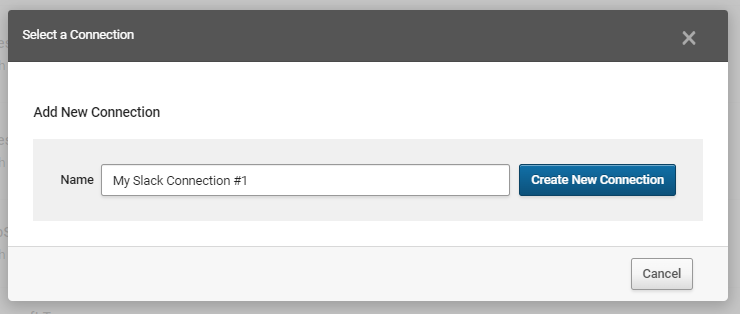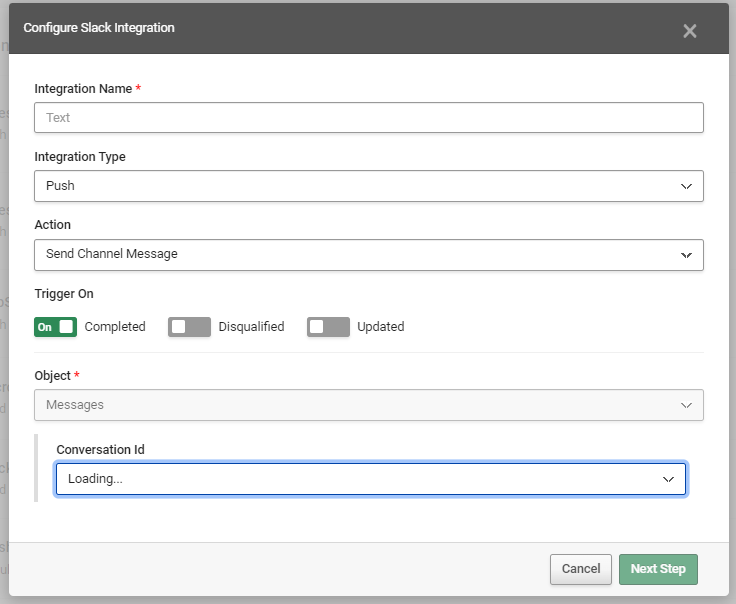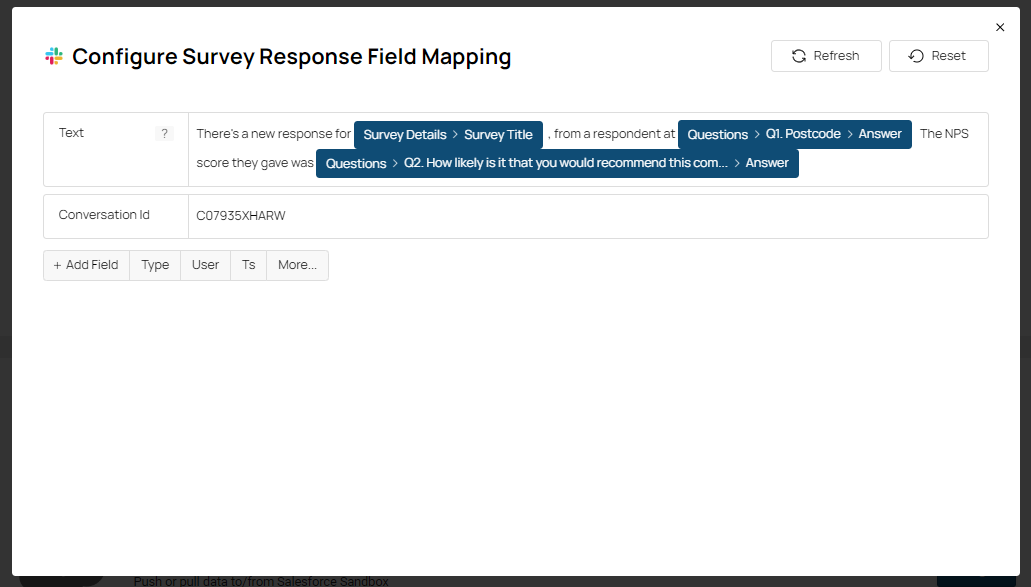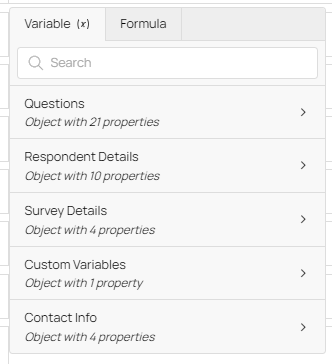SmartSurvey has a new integration with Slack to help you improve and streamline your data processes - for instance you can have an automatic alert in a Slack Channel when a survey receives a response.
Making the Connection
To start, choose “Automate” from the survey options after the Build stage. The next thing you will be presented with is the list of available integrations.
To Connect to a Slack, simply click the “Configure” button next to the Slack Icon. If this is the first time you (as in, the SmartSurvey account you are using) has tried to connect to Slack, you will be prompted to make a connection and you’ll see the below box:

This gives you the opportunity to name the connection (useful if you need to connect to multiple Slacks, for instance). Add your chosen name and click “Create new connection”
The System will now try and log in to the Slack. If you are not already logged in in the same browser as is logged in to SmartSurvey, you should log in as you usually do. The connection should be made automatically, though you may need to pass a two-factor auth check depending on the Slack setup.
If you already have one or more Slack connections set up, then they will be listed above the "add new Connection" box and you just need to click the "Use" button next to the one you want to use.
Basic Configuration
The integration is easy to set up and you can perform the following Action:
Push Actions
|
| Send Channel Message |

Name
- Integration Name: Add a name for the integration.
Integration Type
- Push: Send Data from SmartSurvey to Slack. This is the only option for Slack Integrations.
Push Actions
- Send Channel Message: Create a new Message in a targeted channel. This is the only option for Slack Integrations.
Triggers
There are three options for triggering the integration:
- Completed: The Respondent completes the response in the usual way.
- Disqualified: The Respondent completes the response by triggering a Skip Logic rule to disqualify them.
- Updated: The respondent, or the survey editor, completes the response after accessing it via an edit link.
These can be selected or deselected in any combination. “Completed” will be set by default.
Objects
Only the "Messages" object can be targeted, so this option is greyed out.
Conversation
This is where you select the channel you want the message to be posted. Clicking the drop-down will show the list of available channels in the selected Slack for you to choose from,
Field Mapping
The Field Mapping page will appear once you click "Next Step" on the main integration configuration page for a Push Action.
For a Slack Integration, the Field Mapping page displays all the mandatory fields in the targeted object down the left, with boxes to the right for your mapping settings for each field. You can add extra fields to map by clicking "Add Field" from the buttons below the list. Commonly-used fields will also be shown as buttons to make them quick to add.
The first field is the message text, and the second field is the conversation ID. in the message text, write what you want the message to say, and you can use the integration pop-up to insert the survey content in the message by clicking in the message box. an example of a message with the text and the mapped content is below.

The second field is the conversation ID. You should select the same channel as you used on the previous page.
There are two main options, Variables and Formulas, displayed as tabs on the mapping pop-up. Each tab has several options to choose from.

Variables
The Variables tab allows you to map specific variables directly to the object field.
- Questions: The answers to the questions on the survey
- Respondent Details: Various information about the specific respondent, such as response time, IP Address (if the survey is not anonymous), and selcted language.
- Survey Details: Details about the survey such as it's name or nickname.
- Custom Variables: Any Custom Variables associated with the survey
- Contact Info: Information from the Contact List.
Formulas
The Formulas Tab allows you to choose or create functions to modify variables before they are pushed to the object. The bulk of the list are ready-made functions that cover commonly-used transformations such as extracting first or last name, or getting the domain out of an email address, or combining strings. These actions can be stacked so a field can be mapped to a formula that uses as a variable that the output of a formula.
To map your survey, simply work your way through the listed fields and map them in turn. Your progress is saved at every point that you make a change, so there is no "Save Changes" button. Once you've mapped everything you want, then simply close the field mapping screen by clicking the X icon in the upper-right.